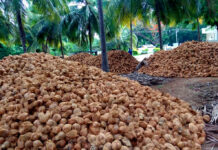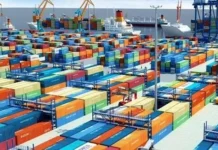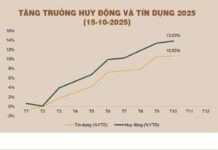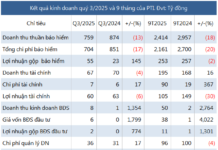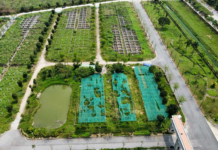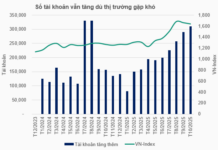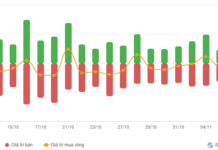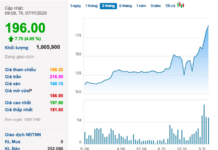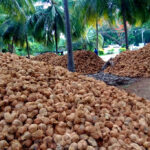Positive Signals for Vietnam’s Trade Outlook
According to the latest preliminary statistics from the General Department of Vietnam Customs, the total import and export value of goods in Vietnam during the first half of May (from May 1st to 15th) reached $31.9 billion, an increase of 7.7% (equivalent to an increase of $2.29 billion) compared to the performance in the second half of April.
Market Recovery
The results achieved in the first half of May brought the total import and export value of the country up to May 15th to $270.82 billion, an increase of 16.8%, equivalent to an absolute increase of $38.87 billion compared to the same period in 2023. During this period, the total export value in the first half of May reached $14.64 billion.
Thus, up to May 15th, the total export value of Vietnam reached $138.59 billion, an increase of 16.1%, equivalent to an increase of $19.17 billion compared to the same period in 2023.
Certain commodity groups witnessed an increase, including computers, electronic products, and components, which rose by $6.16 billion, equivalent to a 34.3% increase; machinery, equipment, tools, and parts, which increased by $1.87 billion, or 12.8%; telephones of all kinds and components, which rose by $1.45 billion, or 7.9%; and cameras, camcorders, and components, which increased by $1.27 billion, equivalent to a 64.6% surge… compared to the same period in 2023.
Regarding import and export activities, the Ministry of Industry and Trade (MoIT) stated that in the first four months of the year, 21 commodity groups achieved an export turnover of over $1 billion, accounting for 86.4% of the country’s total export turnover; and five groups recorded exports of over $5 billion, making up 57.8%. Almost all of Vietnam’s major markets and trading partners showed positive recovery and achieved high growth during this period.
The United States remained the largest market, with an estimated turnover of $34.12 billion, accounting for 27.6% of the country’s total export turnover and an increase of 19.1% compared to the same period last year; followed by the Chinese market with an estimated $17.96 billion; and the EU market with an estimated $16.35 billion…
According to the MoIT, Vietnam’s import and export activities in the near future, especially in key markets such as Europe and the Americas, are expected to benefit from free trade agreements (FTAs), which will continue to have a positive impact and maintain Vietnam’s advantages in trade and investment. Additionally, the global market demand, particularly in the European and American regions, is gradually recovering as inflation has started to show a downward trend since the end of 2023.
Challenges and Opportunities
Among the challenges, the slow recovery of major trading partners and the pressure of global inflation, which is expected to slow down but remain at a high level, are notable factors. The increased focus of developed countries on issues of sustainable development, climate change, and consumer safety is leading to the establishment of new standards and regulations related to supply chains, raw materials, labor, and the environment, which pose higher requirements for imported products. The diversification of supply sources beyond China by many countries, focusing on some partners that are close to the market and equivalent to Vietnam, such as Turkey, Mexico, India, Indonesia, and Bangladesh, will intensify competition in Vietnam’s export markets.
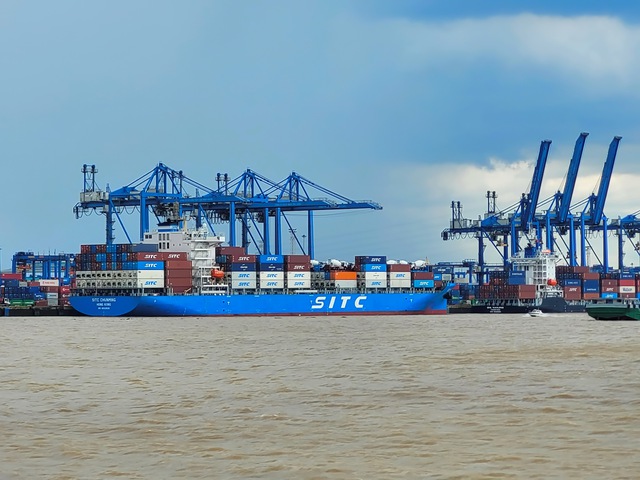
Cargo export through Ho Chi Minh City’s ports. Photo: TAN THANH
Overall Positive Outlook
To maintain the export growth momentum, the MoIT will closely monitor market developments and policy changes of trading partners to propose appropriate solutions, diversify export markets, and promote traditional and new markets. At the same time, the ministry will direct the system of Vietnamese trade offices in key market regions to regularly update information on the situation in foreign markets to provide recommendations to local authorities, associations, and exporting enterprises.
“We will support businesses in shifting to formal exports linked to brand building,” said a representative of the MoIT.
Regarding the information that Vietnam unexpectedly recorded a trade deficit of over $2.6 billion in the first two weeks of May, economic expert Dr. Dinh The Hien stated that it is necessary to closely monitor market developments and import-export activities at present and in the near future. The trade deficit data for two weeks does not indicate anything significant, as the first quarter showed a favorable trade surplus, and in the first four months of the year, Vietnam continued to record a trade surplus of $8.4 billion, maintaining a positive overall context so far.
“The orders signed by enterprises in the first quarter will be delivered in the third quarter or by the end of the year, contributing to the realization of revenue and bringing in foreign currency. The overall picture for the year remains positive, in line with the recovery pace of the Vietnamese and international economies,” said Dr. Hien.
Sharing the same view, Mr. Dinh Duc Quang, Executive Director of the Money Market Division at UOB Vietnam, analyzed that trade data for about two weeks is usually temporary and may be adjusted based on actual developments. Business operations often involve seasonal factors and depend on production orders, so a longer-term perspective is necessary.
Specifically, if we consider the period from the beginning of the year to mid-May, Vietnam’s trade balance still shows a surplus of $6.36 billion, lower than the figure of $6.9 billion in the same period last year but still positive. In the first quarter, the Vietnamese economy demonstrated a positive growth rate and strong recovery, with robust production and export activities. Exports were boosted by the demand for electronic equipment and telephones.
However, experts from UOB Vietnam also mentioned challenges in import and export activities that deserve attention, such as conflicts around the Red Sea region – which accounts for 12% of global trade with 17,000 ships passing through annually – potentially leading to higher shipping costs and disruptions in the transportation network. This could be detrimental to exporters, manufacturers, and supply chains worldwide, including Vietnam, as orders may be affected by delays and increased costs, impacting production activities.
Facilitating Capital Flows
Ms. Phan Thi Khanh Duyen, Deputy Director of the Department of Industry and Trade of Binh Duong province, stated that import and export activities in the province have been favorable, maintaining a positive growth rate compared to the same period last year. Key export sectors such as textiles, footwear, and wood processing have contributed to the province’s export growth.
Specifically, the export turnover of goods in the first four months of the year reached $10.954 billion, an increase of 15.6% over the same period last year (with April alone achieving $3.078 billion). Of this, the domestic economic sector accounted for $2.062 billion, up 16.8%, while the foreign-invested sector was estimated at $8.891 billion, up 15.3%.
According to Ms. Duyen, wood products and the wood industry are one of the key export sectors of Binh Duong and are witnessing a strong recovery. The export turnover of goods in the first four months of the year is estimated at $1.954 billion, up 28.3% over the same period, accounting for 17.8% of the province’s total export turnover. The US remains the main export market, accounting for 82.6% of the total, an increase of 28.8% over the same period last year. This is followed by textiles, footwear, computers, electronic products, and components…
Mr. Pham Van So, Chairman of the Binh Duong Import-Export Association, attributed this success not only to the province’s geographical advantages and traditional strengths but also to the proactiveness and responsiveness of the provincial leadership.
Mr. So cited an example where, during a challenging export period, the Provincial Party Committee Secretary and the Chairman of the Provincial People’s Committee had breakfast meetings with association members to identify solutions and address immediate challenges. Additionally, the provincial leaders regularly organize dialogues with businesses to listen to their concerns, suggestions, and proposals.
To maintain the growth momentum, Mr. So recommended policies to reduce logistics costs and production costs. More importantly, there is a need to facilitate capital flows. While interest rates have decreased, borrowing conditions remain challenging, and businesses struggle to access loans. Other difficulties relate to VAT refunds, tax evasion risk management, etc.
Positive Outlook for Exports
According to Mr. Dinh Duc Minh, Investment Director at VinaCapital, the export landscape is expected to witness significant improvements compared to last year. Inventory levels of major importers worldwide for Vietnamese products have decreased significantly, leading to increased orders. Order volumes have been on the rise for the past six months, and many businesses have reported sufficient orders to last until the third quarter.
Timely Supportive Policies
Mr. Nguyen Quang Vu, Chairman of the Binh Duong Leather and Footwear Association, shared that Binh Duong’s exports have had a competitive advantage for the past 20 years due to its well-developed infrastructure, proximity to airports and seaports, and a dynamic and supportive local government…
However, following the COVID-19 pandemic and the global economic recession, businesses faced numerous challenges. The provincial government promptly implemented supportive policies, especially for small and medium-sized enterprises. The province provided financial support for worker accommodations and incentives for workers to return to work. In terms of markets, while the focus was previously on major markets like the US and the EU, the leadership of Binh Duong proactively sought niche markets such as Iran, Iraq, and India through investment promotion activities, achieving notable success.
“After shifting from traditional markets to niche markets, businesses in the leather and footwear industry have found better opportunities. Instead of solely focusing on contract manufacturing for major brands as before, they can now design, manufacture, and accept smaller orders,” said Mr. Vu.



